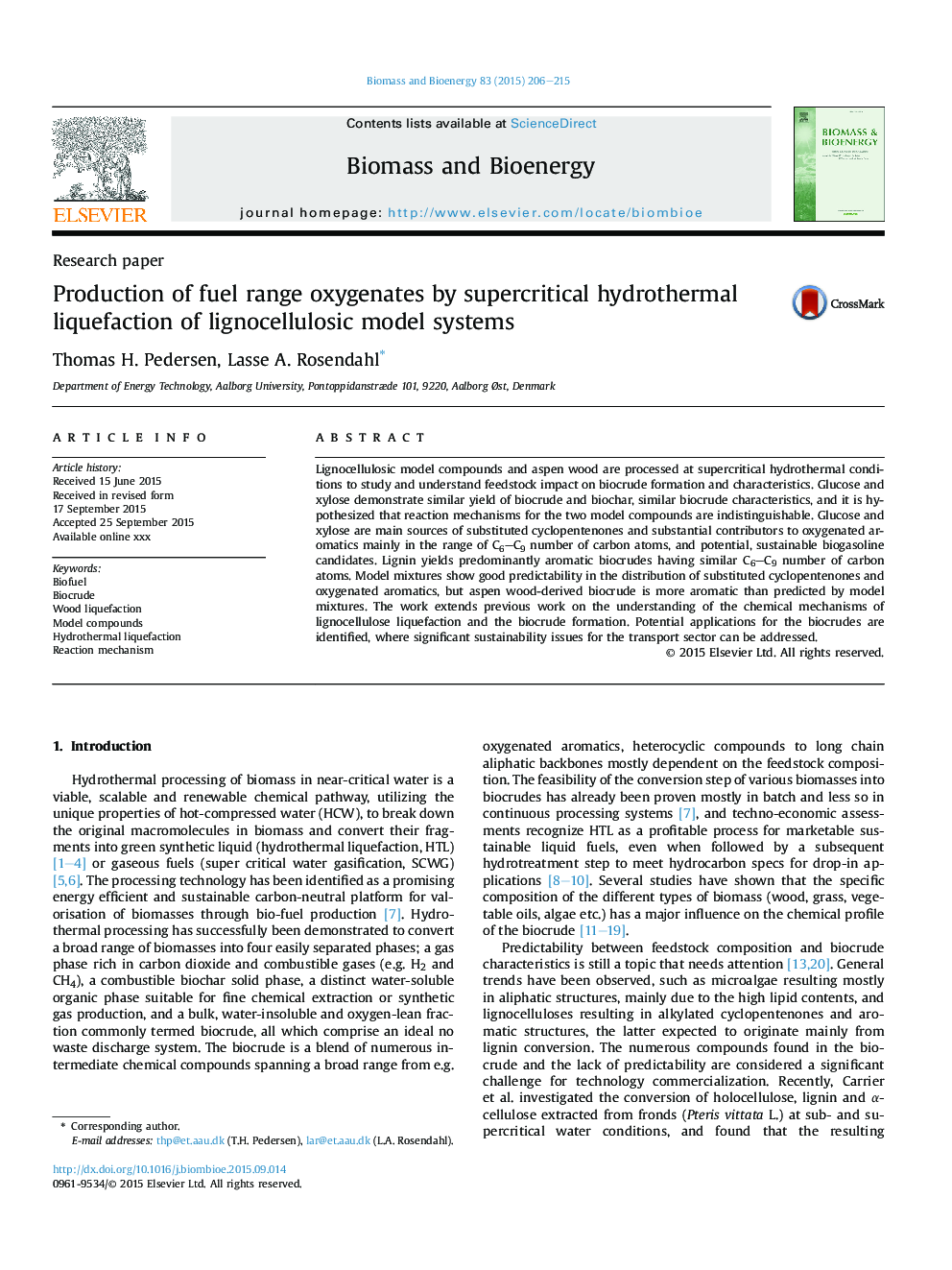| Article ID | Journal | Published Year | Pages | File Type |
|---|---|---|---|---|
| 7063644 | Biomass and Bioenergy | 2015 | 10 Pages |
Abstract
Lignocellulosic model compounds and aspen wood are processed at supercritical hydrothermal conditions to study and understand feedstock impact on biocrude formation and characteristics. Glucose and xylose demonstrate similar yield of biocrude and biochar, similar biocrude characteristics, and it is hypothesized that reaction mechanisms for the two model compounds are indistinguishable. Glucose and xylose are main sources of substituted cyclopentenones and substantial contributors to oxygenated aromatics mainly in the range of C6-C9 number of carbon atoms, and potential, sustainable biogasoline candidates. Lignin yields predominantly aromatic biocrudes having similar C6-C9 number of carbon atoms. Model mixtures show good predictability in the distribution of substituted cyclopentenones and oxygenated aromatics, but aspen wood-derived biocrude is more aromatic than predicted by model mixtures. The work extends previous work on the understanding of the chemical mechanisms of lignocellulose liquefaction and the biocrude formation. Potential applications for the biocrudes are identified, where significant sustainability issues for the transport sector can be addressed.
Related Topics
Physical Sciences and Engineering
Chemical Engineering
Process Chemistry and Technology
Authors
Thomas H. Pedersen, Lasse A. Rosendahl,
